In the recently released Government Major Projects Portfolio (GMPP) Annual Report for 2022-23, the Infrastructure and Projects Authority (IPA) provided key insights into the progress of the Type 31 general-purpose frigate programme.
The report, which uses a Red-Amber-Green scale to evaluate project performance, ranked the Type 31 project as ‘Amber’, indicating ongoing issues that necessitate sustained management attention.
Launched with the goal of enhancing the capabilities of the Royal Navy, the Type 31 frigate programme is central to the UK’s National Shipbuilding Strategy. These vessels, planned to be operational from the mid-2020s, will serve as the backbone of the Royal Navy’s surface fleet. They will undertake crucial missions ranging from disrupting illegal maritime activities to collecting intelligence, delivering defence engagements, and offering humanitarian assistance.
The ‘Amber’ Delivery Confidence Assessment (DCA) of the project, unchanged from the previous financial year, reflects the considerable challenges faced by the programme. Key issues include the impacts of the COVID-19 pandemic on the supply chain, complications related to the conflict in Ukraine, and intricacies in delivering the full capability of a new-to-service combat system.
Adding to the challenges are the uncertainties around inflation, further supply chain disruptions due to ongoing global events, and the Royal Navy’s personnel crunch in key engineering skills. These factors continue to pose significant risks to the timely and successful delivery of the frigate programme.
The report confirms that the project’s end date remains as 2029-03-31, with no deviations from the planned schedule. However, the financial details regarding the baseline and forecasted costs, budget variance, and the total budgeted whole life costs were exempted under Section 43 of the Freedom of Information Act 2000 due to commercial interests.


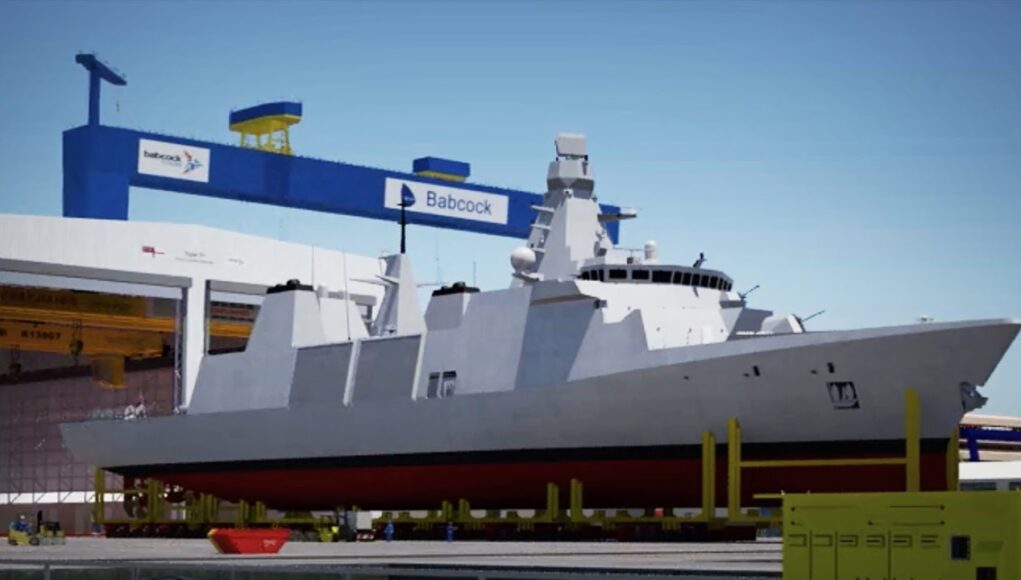
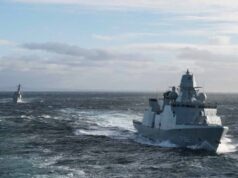
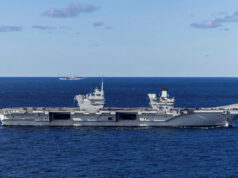
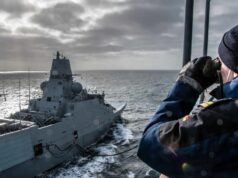
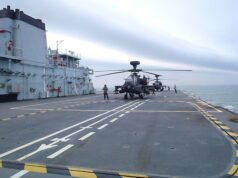

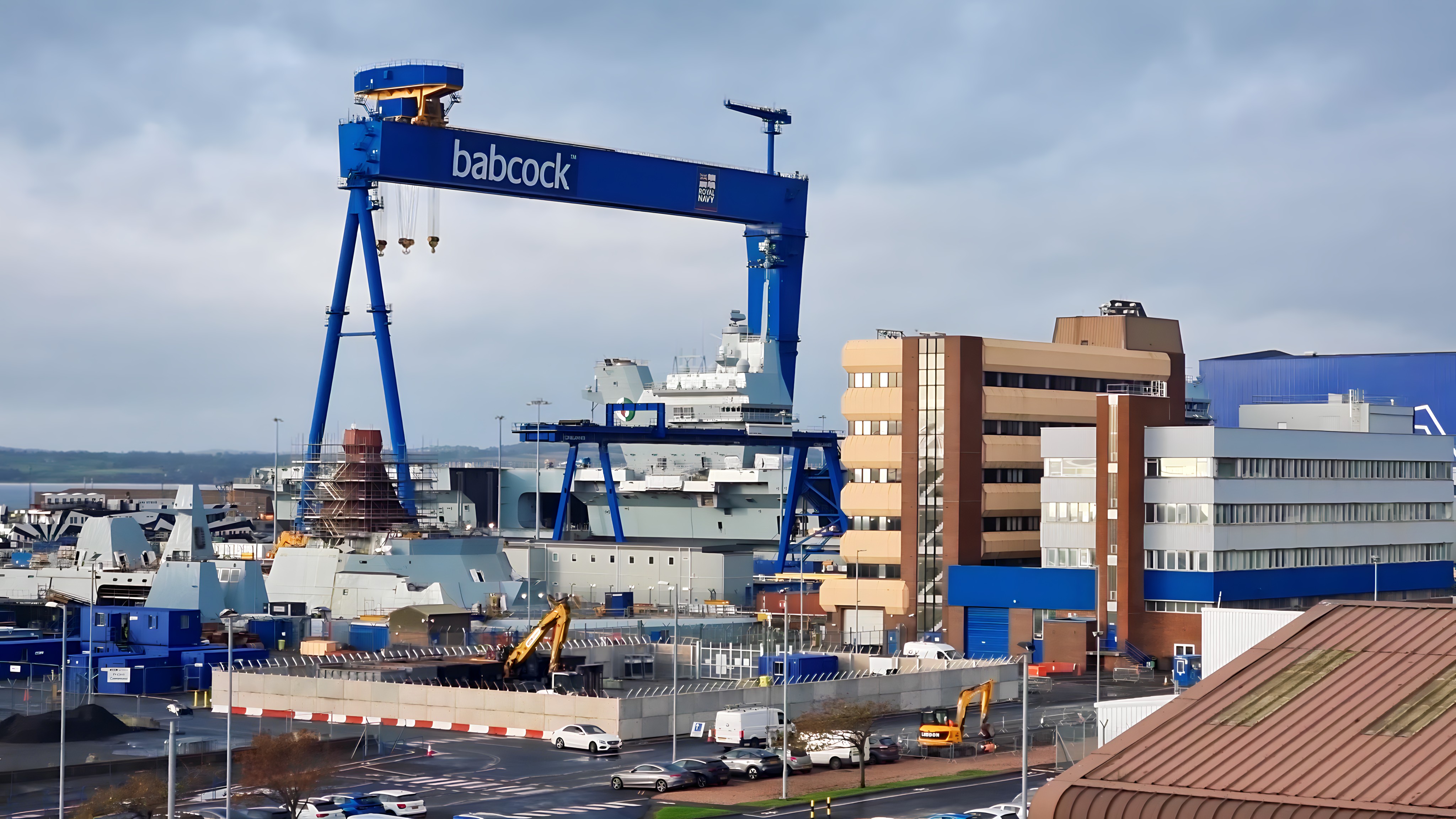
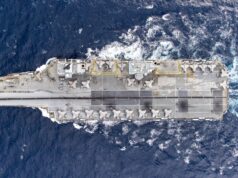

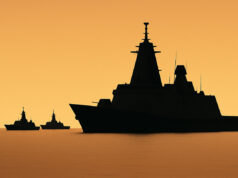
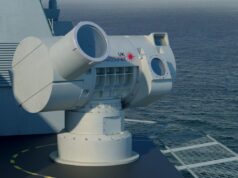

This is very ambitious and I do hope it can be achieved.
MORE than 5 please
The T31 appears to be making good progress and we have known about the obvious disruption of the COVID pandemic for some time now. The bit I find most interesting and bit which should stand as a lesson for the MoD and the RN is the risk associated with bringing a new system into service.
Why the MoD decided to create a whole new project just to bring in more General Purpose frigates when they had a very good platform in production is a bit of a mystery, unless some politician got their wires crossed..?
There I think a way out of the T32 trap. Scrap T32 programme and extend the T31 instead by buy the Stretched version of the T31 proposed by Babcock for the T32. I know that’s a lot of T’s…
The fact is the hoops to jump through for a new programme are rather bigger and more comprehensive than for an existing programme. A modified T31 will only have to justify the upgrades not the entire ship, although obviously a Batch 2 will need full justification but thta is just a numbers issues not a full technical assessment of the existing systems. It will need to be shown that the existing systems can manage any additional load or demands, but if the system were properly scope for growth that should be relatively straight forward. It is still a complicated process but considerably simpler than a entirely new project. Far less opportunity fo rrequirements creep if nothing less.
Cheers CR
T31 is a variant of the A140 design which is an updated IH frigate design which itself was based off the Absalon frigate. So long as T32 is based off A140 or a A140/Absalon hybrid, then it should be a relatively low risk exercise. Shifting to a BAE based design will add risk for what is not intended to be a frontline combatant. ie nothing that has been mentioned about T32 so far has suggested it’s worth a whole new leading edge design to achieve its aims. Spend the money saved on arming the thing better than T31.
I’ve got real doubts about it even happening. I’d go for five moreT31 and maybe put BE to work on design changes to the B2 RIVERS with far impressed suhrviveability, weapons fit,and save millions on R&D.more 31’s most of all this mothership this and mothership that could easily be done by the echo and enterprise.
No doubt that the project will be blighted by the usual arguments over the design and specs will double the amount of delivery time, re tooling, alterations to the building spot’s will delay the process for years. 5 more type 31 ‘s with proper ASW makes far more sense
I’m still not sure if the tasks the 32 is to undertake actually require a frigate or would be better served by a different type of ship.
I get the government like to say frigate as it looks like the escort numbers are increasing but if the ship doesn’t actually do frigate work it’s not an increase.
From what I gather it’s to be a platform for autonomous mine and anti submarine stuff. So surely a well deck would be useful and a big flight deck/hanger and module bay. Ability to defend its self and autonomous vehicles with 15 miles or so.
A variation of the amphibious replacement ships may be better.
There’s no mystery CR. HMG/MOD decided that BAE would cost too much building GP versions pof T26, hence the T31 tender, which BAE also bid for. That helped keep costs down some & has left BAE free to build T26 plus future warships. T31 meanwhile proceeds & T32 is still very much still on the drawing board. It could indeed be just more T31s with minor changes. It’s still unfunded, whatever it may become.
It appears that Babcock have spashed the cash in which to get things ready for the Type 31
It’s main challenge is having no ASW sonar. Add on the unquietened propulsion system and it is inferior in every aspect of ASW warfare to the 30 year old ships it is replacing.
The roles set out:
“They will undertake crucial missions ranging from disrupting illegal maritime activities to collecting intelligence, delivering defence engagements, and offering humanitarian assistance”
…are considerably narrower in scope than the roles undertaken by the Type 23 GP ships. In fact, all of the roles described could have been undertaken by a Batch 2 River class with a permanently embarked helicopter if we’d built 4 of them with a hangar instead of 5 without.
Hi Steve, It looks like the originally stated roles which corresponded roughly to a ‘patrol frigate’ were just a starting point. That was the perceived urgent role gap and £250m was the budget constraint. Arrowhead 140 was chosen in preference to Leander ( stretched River / Khareef) not just to spite BAe but because of its growth potential. I’m not expert on the sonar debate but T31 has torpedo detection sonar ( and decoys I think) and a Wildcat with Stingray. I think the RN consider that it can defend itself against the submarine threats it is likely to encounter. It is not an out out sub hunter killer.
With NSM and Sea Ceptor T31 is a credible GP frigate: load its Mk41 with relevant missiles and it morphs into an AA or ABM extension to a T45; or into a land strike platform in its own right.
As you say there is the option to incorporate machinery rafting to make an ASW version; or build more T26. But UUV ASW technology seems to be evolving quite quickly as is technology like Sea Guardian so maybe the RN see investment in these technologies as where they want to spend their money.
So it’s not an ASW frigate and it is not intended for ASW patrols, so why would it need ASW sonar. Is there a small deficit of understanding somewhere?
Interesting contrast between Paul’s polite reply disagreeing and your rude one.
The ships they are replacing have an ASW sonar and quietened machinery and are predominantly used in the Gulf where there is an ASW threat from a hostile nation (Iran). If, as you say, the T31 is not intended to undertake ASW operations then which ships are going to undertake the Gulf patrol done by the T23 GP’s? If you say T26 then I’d point out that we’re only building 8 so will have 3 deployed at any one time due to the 3:1 ratio*. One is needed in the North Atlantic given the Russian undersea threat to our infrastructure and two are required for the CSG, so all T26’s are already accouted for.
*The standard ratio for the number of ships on operation compared to the numbers in refit, maintenance, work up or travelling to and from their assigned operational area.
So you almost get the point that these are not ASW frigates, are not intended to be ASW frigates and never will be ASW frigates. You also almost get the point that we have always had (in modern times) general purpose frigates AND ASW frigates. And almost get the point that these are the former? ( sorry about the sarcasm couldn’t help myself as I’m struggling to see why it’s so hard to get the point across).
For a man who likes talking about points you didn’t answer any of mine but instead decided to demonstrate that sarcasm doesn’t replace intelligence.
Our current General Purpose frigates are used for ASW operations. I even set out which deployment that is. Our new General Purpose frigates can’t be used in those same deployments and we don’t have other ships to undertake them. I think it’s terrible idea to replace 30 year old ships that can and do undertake ASW operations with brand new ones that can’t.
So to your point, what exactly is it that makes it impossible for these GPW frigates to perform ASW operations just like any other general purpose frigates should it become necessary?
The T31 has:
No ASW detection sonar
It has a noisy diesel engine which isn’t quietened by rafting
It will deploy with the Lynx helicopter which also has no ASW detection equipment
No shit Sherlock! It’s not an ASW frigate! So tell me, how many other second division navies strap on sonar detection to their noisy frigates and assign them to do ASW work? (ABs anyone).
“It’s not an ASW frigate”. Just keep shouting that and ignore the posts everyone else is making pointing out why it needs to have ASW capability. It’s really winning the argument.
AB’S are destroyers not frigates
Poland are fitting their T31’s with a sonar.
Denmark fitted their Iver Huitfeltdt frigates, from which the T31 is derived, with a sonar. France is fitting their L Fayette frigates with a sonar.
Got any more questions that show that you don’t know what you’re talking about?
Obviously no logic to be found in your universe. Not being able to tell the difference between a hammer and a saw and recognise that the carpenter needs both. So every frigate has to have AWS capabilities, sure I get it!
So the point you are making is that T31 is for gunboat and cocktail diplomacy making parties in helo deck?
That seems a bit waste of a ship.
Maybe we should start talking about incomplete RN ships:
Carriers without self defence
RN T26 without aerial area defence
T31 without ASW capabilities.
No the point I am making is 1) We are not at war 2) We are part of NATO tasking and have been for some time 3) it has been RN policy, for some time to have specialised combatants AAW/ASW/GPW, this policy brought about by conflict expertise.
You seem to believe that you know better, but don’t seem inclined to produce any evidence for your assertions. This is a common occurrence, the I know better than the professionals armchair commentators.
If a sub turns up it is a sitting duck, that’s why it needs to have basic ASW sonar. It is a frigate, an escort, both terms necessitate at least basic ASW detection to defend itself & any merchant/RFA vessels it is escorting.
Having pioneered ASW & Asdic/sonar the RN for purely budgetry reasons insanely builds escorts with no hull sonar when nobody else omits it on theirs.
Refer to previous comments. If a submarine turns up in my garden, not much I can do!!
When you have such a tiny number of escorts it’s unlikely we’d be able to cherry pick easier missions for T31s in any conflict. We’d just have to use whatever is available at the time & no enemy will go “easy” on any of our ships lacking capabilities. That will be on us & the insane, ignorant penny pinchers.
Nelson & Fischer will be spinning so fast in their graves you could use them as lathes.
Exactly mate.
The comments to your post are a little rude… I would counter them by saying the T23 GPFs bow mounted sonar are more or less obsolete.. they operate Wildcat… They have limited numbers of UW ratings onboard and they primarily do not have a good or even adequate ASW capability.
They operate in the gulf not as ASW frigates but as GP Frigates because ASW threat is limited in that area in comparison to the Baltic, Atlantic TAPS areas.
Overall the T31 will be much more capable on the GPs intended role. Containerised mission bays, excellent point defence and soft kill capability with the new decoys EW and gun systems making it the best ship we have against Drone or Swarm attack. It can also hold ORCs or other multiple pairs of Fast boats and host more embarked forces.. Consider the NEO capability and flexibility of these ships in this unstable area of the world… Maldives is in a state of political flux, we may need to respond and evacuate UK nationals. We could need to defend multiple merchants and deploy Containerised MCM units.
These ships will probably bee the framework for t32 and will no doubt be more reliable than anything BAE have built in the last 15 years (for the uk)
T23 GP with 2050 is a V good ASW asset. The sonar is dated but it’s still incredibly good and has a ridiculously long range in open oceans with good Enviromental’s. They have MTLS, a large Torp mag and a Vectac capability.
S2150 is an updated S2050 that overcomes obsolescence of parts issues. Because something is obsolescent doesn’t mean it doesn’t work or do its job. it means it’s getting more difficult to support without some creative spare’s procurement!
ASW in the gulf is problematic anyway. Most places are around 60m depth so tail operations are a nonstarter.
Active sets suffer from reverb off the bottom. That said a helo and an observer with some polaroid sunglasses can probably see a sub below the surface in most cases any way. We were used a camera system with filters to spot mines at depth in the Gulf in the late 80s so things have moved on a bit with EO since then.
Out through the Straits into the Gulf of Oman that’s another story with deep water and a sub threat from various nations. For a T31 a Captas type active towed array POD or thin line array capable drone boat would be a good fit. The RNs 11m workboats, the same ones that already do remote MCM work, have been trialled with this capability already using a Krait Thin Array, so someone is already thinking about it.
These reports are a waste of time, every project is red or amber until just before it’s finished then they move it to green, I wonder how many civil servants and management consultants were employed to make this report.it’s as much use as Osbourne office of budgetary responsibility that projects a recession ever year.
Amber is a good way of concentrating minds and warning against drift. Cost over runs are a fact affecting almost all large projects; some these in the British defence context are ultimately because of neglect of the national interest over decades. The Peace Dividend indeed!
The cost was always going to drift to double the initially projected and somewhat daft £250 million.
They will end up being about £600 million a piece as they get generally more robustly armed to become a capable GP frigate.
It was always absolutely inevitable and many of us called it as the project was announced.
I would go further, if there is going to be a T32, then make it a simple uparmed T31, don’t stretch it, keep it affordable, perhaps add a 5″ gun instead of the 57mm.
I have my doubts regarding T32 anyway, without an increase in numbers, who’s going to crew them??
Especially as we have ambitions to move back to 12 SSN’s in the future, manning 8 active SSN’s, plus additional Frigates and both carriers, means something has to give…
The £250 million initial cost was always going to be completely unachievable,none of the original bidders could fulfill it hence why the tendering process was re-run.I don’t think the final price will be as high as £600 million – that would be a travesty of monumental proportions,and for that price sticking to the original 13 Type 26’s would have made more sense.I think delivery and into service will be in the £400-450 million each range.
“total budgeted whole life costs were exempted under Section 43 of the Freedom of Information Act 2000 due to commercial interests.”
Translating from MoD-speak this means that there are hidden long-term cockup costs in the T31 programme that they cannot yet determine and so wish to hide. “Commercial interests” is frequently used by the MoD as an excuse to prevent politicians and the public from establishing exactly how big a hit the taxpayer is going to take. Maybe, for example, like the T45s the design committee decided not to put noise-control engineering into the spec and it’s now too late to rectify
Or it may just be one key supplier who is unable to provide through-life costs. One would expect Wallace’s replacement to get a grip on this sort of thing
Yes the £250 million was just for the ship itself, weapons & sensors being additional. Prices(materials, labour etc) have rocketed recently too, so that is already outdated.
The MCM force.
Also the newer Frigates having less personnel is a help.
On RN manning I think we just need to pay better & give better support & terms for personnel to recruit & retain those we need. HMG always argues we have to pay the best & wealthiest more to keep them, but for the ordinary workers they argue until blue in the face that we can’t afford anything even near inflation, so they get poorer every year.
If the yards can push them out on time and keeping the costs within reasonable areas, forget T32, and build another five, I’ve a belief that the class will be very good indeed just 5 for an initial order was disappointing especially with all the work and arguments over design and specs. If someone had got the project by the scruff of the neck. We might have had one fitting out now
Agree
Keep serial production going. First 5 needed in service rapidly. Next 5 at a rate of 1 a year.
Ideally batch 2 would be optimised for NGS.
I’d actually like to see type 31s becoming the principle surface warship in numerous batches.
Type 32 could be a type 31 easily. Stretch out the hull a bit more add a slightly larger mission bay and fit a crane or 2 for recovering surface and sub surface drones. Job done.
“the backbone of the Royal Navy’s surface fleet”.
No.
That is the T45 & T26, plus the QEs.
T31s are budget escorts that support the rest, where we hope to get way with not using a top level air defence or ASW escort. They’re becoming better rounded warships with T41 VLS being fitted now.
OT. -Re-reading about the Anglo Dutch wars in the latter C17th & there wasn’t time during each short war to build any extra ships, so both Dutch & English navies only had existing ships, ships activated from reserve, impressed/armed merchants etc plus those few ships already building being completed.
So the argument that we’d see any major future conflict coming with time to get warships built doesn’t always hold(Rarely on most occasions) & the pityfully tiny current escort fleet is IMO a desperately dangerous force level for the RN.
It’s good that if the current plans for the RN complete we’ll return to c24+ escorts by the late 2030s, but meantime we find ourselves far below safe levels for a decade while navigating one of the most dangerous times in post WW2 history. We have just one aged FSS ship & some are saying the HW/Navantia capability to build 3 new ones is very risky indeed, relying on HW cresting a whole new workforce(They had only 100 at the start) with the necessary skills, with minimal hiccups.
Yet HMG continues to try to squeeze more cuts out of a desperately threadbare navy. No wonder Russia donates to HMG-leave us to it & we disarm ourselves!
Shame we’ll only get 5 I can’t see any logical reason why the next government will need more ships when our focus will be so much closer to home. 13 frigate, 5 destroyers and 7 OPV is more than enough to cover home waters.
I was a real pessimist about this project and wanted to see more T26’s instead, but look set to be proven wrong. My concern now is that the T31’s are becoming too sophisticated, capable, important and expensive to run to be replacement’s for the forward deployed OPV Batch 2’s from c.2028, when the Batch 1s leave service and they are needed to police UK waters. There seems to be a good case for building a few slightly improved OPV Batch 3s instead. A perfect job for H&W Appledore.
Given the issues that Appledore had with the Irish P60’s with their fit out being on the tidal flat (storm delays, damage shafts), I would question whether it would be suitable tbh.
Interesting. I know the yard has limitations but thought that the four P60 (Samuel Beckett class) builds went quite well. I live in Ireland and don’t remember any negative reports appearing in local media – other than that the ships should have been built in Ireland!
Think it was Joyce that had the damage to at least one of her shafts that delayed her hand over for 6-9 months, and work like their masts had to be done at the quayside for height issues, think it might have been Yeats that got hit hard with the winter storms having been floated out and on the mud bank. I mean there were no major issues, but then the 60’s are a lot more basic than the Batch 2s or any theoretical Batch 3.
As for those complaining about them not being built here, idiots are probably the same ones that complained about the costs of the new ships, and would never agree to a navy that would keep the dockyard open. Shame the Eithne project fell through, or that we didn’t agree to the dutch idea of building subs for Taiwan in Cobh.
Good news overall. If I gad a choice I would go for two more T26 and three more T31 and forget all about T32. The money saved with continuity and streamlining MOD would probably pay dividends.
I very much doubt that we will see a T32 frigate class. The RN equipment budget is as always overstretched and there is nothing spare to pay for a batch of additional escorts.
If we look at what’s on order, we have to.fund 5 x T31s and 8 x T26s in a rush, because we have the T8X destroyer supposed to be building by the mid-30s to replace the T45s. I would think there is very little chance of building 13 escorts in 12 years. The budget permits about one escort a year. The T26s were meant to be commissioned at 18 month intervals and that looks unlikely due to the cost.
Can’t see how the budget or schedule could stretch to fit in additional T32 frigates.
I suspect the whole T32 thing was Radakin pushing for more and Boris blurting out another PR soundbite that had no substance to it.
I agree with Frank 62s point about the T31’s lack of ASW capability. It makes it vulnerable as a lone patrol ship and of doubtful value as a convoy escort. Suspect it will nèed to be upgraded to carry UUVs and a larget, sonar dipping helicopter, possibly a marinised version of the NMH, at the minimum, just to give some basic ASW capability.
Maybe some of theses increased costs are due to the reconfiguring the T31s for 4 MK41s? Is the MoD to blame for that? If so they should come to the party. If they remove the forward 40mm and put 24 CAMM silos there, which should be doable, as the NZ Anzac frigates have 20 CAMM in their old MK41 space, and there’s room for 2 MK41s there. The 5 spare 40mm could go on the Carriers or upgrade the River B2s. Just my 5p worth. As others have said, here’s hoping the T32s are something sensible like an evolution of the T31.
If three T23s have been retired there must be 3×32=96 CAMM silos available for re-gifting to the T31s, exactly enough for 4 ships x 24. There must be some savings there.
You can’t swap out the VLS Silos from the Type 23’s,they will see no further use,only the Missiles can be re-used.
The T23 “silos” are just big round holes in a steel deck.
To take SC which is a small ish square cross section an adaptor piece was made to stop it “rattling” in the hole. The spool piece that comes out of the deck is to allow for the extra length of an SC cannister compared to the old shorter VLSW cannister that fitted in the hole almost flush to the deck.
Below decks in the mag is a rail on the deck to secure the bottom of the SC cannister and a securing bracket on the deckhead to secure the top of the SC cannister. Some cabling from each cannister to the MFU. Thats it about it
There is nothing to really transfer except the electronics. Missile Firing Unit (MFU) which controls 8 missiles so 4 of those per ship, data link domes and cabinets and the Ops room console. Volume wise it’s probably equivalent to no more than ten upright domestic fridge freezers.
On new builds you can make the SC cannisters flush with the deck as the depth of the below decks mag will not require spool pieces to stick up above the deck. You can pack the SC cannisters closer together as there are no legacy VLSW holes that must be used.
You dont need MK41 or ExlS for SC. Its storage cannister is also its launcher. Adding say a Mk41 into the equation to “quad Pack” adds unneeded interface complexity. You would still need the MFU but instead of directly interfacing with the SC cannister, you would need an addaptor /interface into the Mk41 and interfaces in the Mk41 to connect to the cannister. You would also add in the requirement for the door to open prior to firing something that the SC cannister does not need.
The SC system is simple in its requirements, and it needs to stay that way.
Thanks GB, love all your detail and experience. It will be interesting to see how many and where they place the CAMM if not in any of the MK41s on the T31s. I’m sure you’ll give us an update on this when you get up close with it. Question, with the CAMM load on the Polish A140s, haven’t they’ve only got Mk41s there unless it they’re using some other VLS silo type? Would you know or anyone else here?
Many of the comments say to forget the T32 and build a Batch2 T31. Whilst I understand the thinking I am not sure if a Batch2 T31 will do the job expected of the T32 and that is to be a frigate capable mothership.
I as many of you know have said the Damen Crossover would be a good concept to follow. However when I saw what Babcock was thinking for the T32, a slightly stretched T31 with an under flight deck multi mission deck, midships multi mission bay, a side ramp, stern ramp and a hanger for two Merlins. These are the pluses the negitives is a reduced flight deck, Merlin capable but not Chinook, the removal of the forward 40mm and replaced with two blocks of Mk41s. However there is locations for Phalanx CIWS and the two blocks of Mk41s could for example be loaded with 6 cruise missiles, 20 Sea Ceptor-ER (quad packed and 20 Sea Ceptors (quad packed) with 8-16 containerised Anti Ship Missiles midships. With the ability to launch small boats either for RM operations or mine warfare, the RN PODS concept or the Danish SH Cube for flexibility in use.
It also appears that Norway is looking at a new generation of frigate which could mean some form of co-operation, especially if Babcock found a way to mitigate noise and ice strengthen the hull. If we could work with the Norwegians then we could be building up to ten of these ships here in the UK.
My only suggestion for this ship would be to use the sonar suite that would be removed from the T23s as the T26s have new hull and towed arrays on order.
This Babcock concept would for a limited increase in cost give the RN a good general purpose frigate leaving the T31 for overseas policing patrols either in addition to or replacing the Batch2 OPVs. If the UK government can get its act together then we could combine the T31 and Multi Role Support Ship into forward deployed Responce Groups. I really do like the Ellida concept for the MRSS.